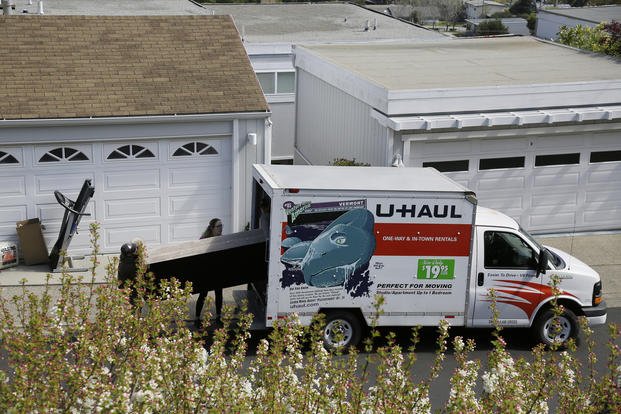Military personnel have a reputation for being flexible. Companies that hire veterans will frequently mention this flexibility among their reasons for targeting that demographic.
Included in this label is geographic flexibility. Most military personnel change assignments every 2-3 years. Many of these job changes require a geographic displacement. After four to 20 or more years of this lifestyle, you have obviously learned how to relocate. Perhaps you should ask yourself whether you want to market that talent.
The phrase Willing to Relocate appears on many resumes. Those three words send a powerful message to a potential employer: For the right opportunity, I will go just about anywhere. If that willingness applies to you, then it should also be on your resume.
It is, however, important that you do not misrepresent how you truly feel. As much as you want to reinforce the flexibility label and keep the doors open, you do not want to find yourself in a position where you decline an offer primarily because of the location of the job.
If that is the main reason you are saying no, then you are not as willing to relocate as the message you conveyed earlier in the interviewing process.
The choices we make in life are not only driven by the alternatives at hand but also by our preferences, likes and dislikes. This decision-making process is a major component of a job search. Very few, if any, people are willing to relocate without restrictions.
Humans are choosy by nature. In the end, the ideal job search will produce options and the more options, the better. Right? Not necessarily.
In order to maximize the number of choices, one must minimize the number of filters. For example, let's say you will do any job, live anywhere, take any salary, place no restrictions on travel, work any and all hours of the day, and are open to any type of business or industry. That level of flexibility will definitely increase the options available, but does that approach support your goal of finding the right opportunity?
Job location is a filter used by both parties in a job search. An employer does not want to interview a candidate who will not seriously consider the location of the job. Similarly, a candidate should not waste time and resources to find a job in a location where they will not live.
Keep in mind, too, that filters do two things when applied to a system. Yes, they increase the quality of the final product by removing impurities along the way. However, in the process of removing these impurities, the flow or quantity is restricted and choices are fewer, but also inherently better. Think about it; what matters more -- quantity or quality?
How important is the geographic location filter in your job search? Take the time to learn your Geographic ABCs before you start interviewing. Here is a 10-step exercise to help you answer that question and conduct a more productive search.
Step No. 1
Gather together a map of the USA, writing materials and an eraser.
Step No. 2
Compile your A List of places to live. This is the A List because it consists of all of your premium locations -- ones that are so good that you would sacrifice other criteria in order to live there. You can list whole states, parts of states, cities, towns or regions.
Step No. 3
Compile your C List. These are the locations where you will not, under any circumstances, reside. No matter how good everything else is, it does not matter. You will not even consider it.
Step No. 4
Compile your B List. This one is easy because it consists of everything not already accounted for on A or C. These locations, although neither prime nor rejected, are acceptable if everything else about the opportunity is positive.
Step No. 5
Review the map to make sure that every square mile is accounted for and shows up on one of the lists.
Step No. 6
Quality-control all three lists. There are several ways to do this.
First, have your family or significant other review them. That frequently changes things. Second, consider the size of the state. For example, when you say New York or Texas, do you mean the entire state or a section of it?
Third, consider the size of the town. When you say North Carolina, does Bolivia work as well as Charlotte? Fourth, take into account bordering states. For example, Ohio is on your A List, specifically Cincinnati. Kentucky is on your C List. Are you sure? Guess what? The Cincinnati airport is actually in Kentucky.
Step No. 7
Walk away from this exercise for 24 hours and then take another look at all three lists. Pay particular attention to the B List. Upon further review, some of those locations might slide to A or C.
Step No. 8
Using an eraser, modify the map of the USA so that it now represents the USY -- the United States of You -- by eliminating everything on the C List. Things just got easier and harder at the same time.
Although geographically speaking, you may have much less from which to choose, the remaining choices are much more likely to make you happy.
Focus your job-search resources on positions in locations that are on the A and B lists. Make sure to share those lists with all of the people who are assisting you in your search.
Step No. 9
Use the results of this exercise to prioritize your search parameters. Here is how. Consider that in addition to those three categories of location -- A, B, and C -- there are also three categories of opportunities out there for you: A grade, B grade and C grade.
Make the assumption that you are good enough to find something in the A or B grade categories, and that leaves you with four choices.
First choice: an A grade opportunity in an A grade location
Now for the hard part. What do you do if you cannot get your first choice? You move on to your second choice, right? But wait, what comes second?
That question has no right or wrong answer. It depends entirely on what really matters to you and where geographic location appears on your priority list.
Second choice: an A grade opportunity in a B grade location
Third choice: a B grade opportunity in an A grade location
Fourth choice: a B grade opportunity in a B grade location
Step No. 10
Decide whether to include the phrase Willing to Relocate on your resume; figure out how you will answer the Where do you want to live? question in an interview; and give some thought to what you will put in that Geographic Preference box on that application form.
In summary, be as flexible on location as your personal circumstances will allow and be sure to study your Geographic ABCs before you launch your job search.
© 2012; Tom Wolfe, author; all rights reserved; excerpts from "Out of Uniform: Your Guide to a Successful Military-to-Civilian Career Transition"; used with the permission of the author and publisher,
Want to Know More About the Military?
Be sure to get the latest news about the U.S. military, as well as critical info about how to join and all the benefits of service. Subscribe to Military.com and receive customized updates delivered straight to your inbox.











